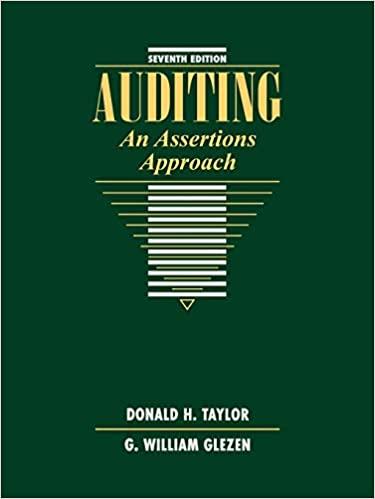During the course of an audit, Ms. Command, the senior, decided to use non statistical sampling (per
Question:
During the course of an audit, Ms. Command, the senior, decided to use non statistical sampling (per SAS No. 39 guidelines) on a test of controls. The sampling plan included the following.
1. The planned tolerable rate was set at 6 percent because only a moderate effect on the financial statements would occur if the control being tested did not function properly.
2. The risk of assessing control risk too low was set at a low level because of the need for high assurance that the control was functioning as prescribed.
3. The estimated deviation rate in the population was set at 2 percent, based on the deviation rate found in the prior year.
Although non statistical sampling was used, Ms. Command computed a sample size based on numerical guidelines in the auditing literature. The performance of the test of controls was assigned to Mr. Critical, an assistant.
Mr. Critical selected and audited the sample and calculated a sample deviation rate of 2.5 percent. However, he was puzzled as to how to evaluate the sample results. He remembered reading the guidelines in the auditing literature. If the sample deviation rate is far enough below the planned tolerable rate, there is an acceptably low risk that the true deviation rate in the population exceeds the planned tolerable rate; 2.5 percent seemed to be sufficiently low to accept the sampling results.
The auditing literature, however, also suggests that the sampling results would not generally be accepted if the sample deviation rate exceeded the estimate of the deviation rate in the population ( 2.5 percent compared to 2 percent). Mr. Critical took the question to Ms. Command, who stated that the sampling results should be accepted and related substantive tests restricted.
Mr. Critical questioned whether the sampling results should be accepted if the sample deviation rate is 2.5 percent. It seemed that the "careful" course of action was to expand the substantive tests. To accept the results seemed "out of line" with guidelines in the auditing literature. Ms. Overhear, another assistant, injected an opinion. She thought that the sample should be expanded. Her reasoning was that the sample deviation rate "should be 2 percent or under," based on knowledge of the population characteristics and prior-year audits Required:
Evaluate the strength and weaknesses of each person's argument.
Step by Step Answer:

Auditing An Assertions Approach
ISBN: 9780471134213
7th Edition
Authors: G. William Glezen, Donald H. Taylor





